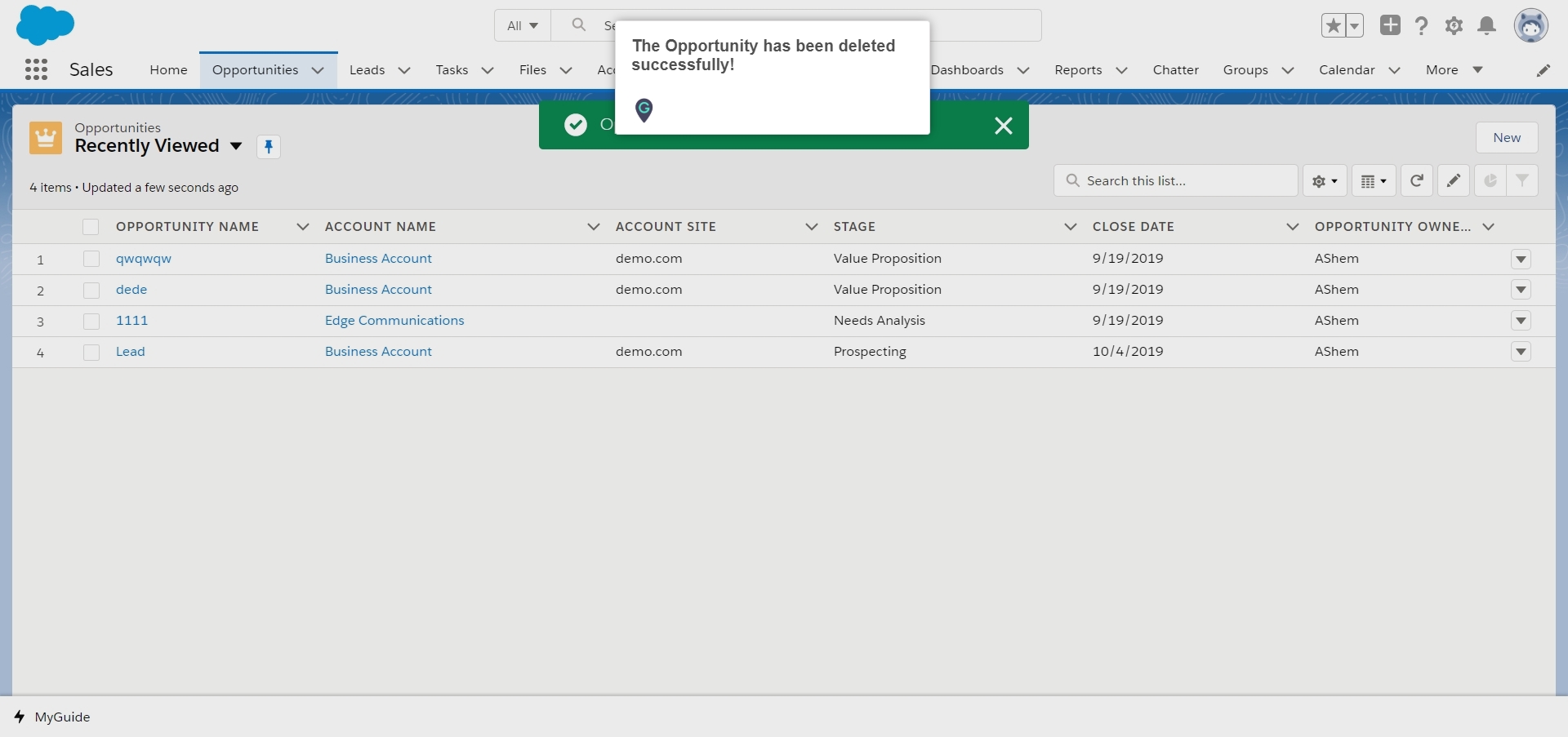How to delete opportunity in salesforce – Deleting opportunities in Salesforce is a critical task that requires careful consideration. This guide provides a comprehensive overview of the various methods for deleting opportunities, including manual deletion, bulk deletion, and automation. We’ll cover the steps involved in each method, potential risks and consequences, and best practices to ensure data integrity.
Whether you’re dealing with a single outdated opportunity or a large number of obsolete records, this guide will equip you with the knowledge and tools you need to effectively manage your Salesforce data.
Manual Deletion of Opportunities
Manual deletion of opportunities in Salesforce is a straightforward process, but it’s essential to understand the potential risks and consequences before proceeding. Deleting an opportunity permanently removes it from your Salesforce database, along with any associated data, such as notes, attachments, and activities.
Deleting opportunities in Salesforce is a straightforward process, but if you’re looking for a guide on how to delete your Kindle Unlimited history, click here . Once you’ve cleared your Kindle Unlimited history, you can return to Salesforce and continue deleting opportunities as needed.
To manually delete an opportunity, follow these steps:
- Navigate to the Opportunity tab in Salesforce.
- Locate the opportunity you want to delete and click on its name to open the opportunity record.
- Click on the “Delete” button located in the top-right corner of the opportunity record page.
- Confirm the deletion by clicking on the “Delete” button in the confirmation dialog box.
Once you delete an opportunity, it cannot be recovered. Therefore, it’s important to carefully consider the consequences before deleting any opportunities. If you’re unsure whether or not you should delete an opportunity, it’s best to consult with your Salesforce administrator or a knowledgeable colleague.
Limitations and Considerations
There are a few limitations and considerations to keep in mind when manually deleting opportunities in Salesforce:
- You can only delete opportunities that are in a closed state. Opportunities in an open state must be closed before they can be deleted.
- Deleting an opportunity also deletes all associated data, such as notes, attachments, and activities. This data cannot be recovered once the opportunity is deleted.
- If an opportunity is linked to other records, such as accounts or contacts, deleting the opportunity will not delete those records. However, the relationship between the opportunity and those records will be broken.
Bulk Deletion of Opportunities: How To Delete Opportunity In Salesforce

When dealing with large volumes of data, it becomes necessary to delete opportunities in bulk. Salesforce provides two methods for bulk deletion: Salesforce Data Loader and Apex triggers.
Using Salesforce Data Loader
- Export the opportunities you want to delete into a CSV file.
- Open the Salesforce Data Loader and select the “Delete” operation.
- Choose the object type as “Opportunity” and map the fields accordingly.
- Select the CSV file and execute the deletion process.
Using Apex Triggers
- Create an Apex trigger on the Opportunity object with the “before delete” event.
- In the trigger, write logic to identify and delete the desired opportunities.
- Deploy and activate the trigger.
When to Use Bulk Deletion
- Deleting a large number of opportunities that are no longer relevant or outdated.
- Cleaning up data to improve performance and reduce storage space.
- Complying with data retention policies or regulations.
Importance of Data Validation and Backup
Before performing bulk deletion, it is crucial to:
- Validate the data to ensure that only the intended opportunities are deleted.
- Create a backup of the data in case of any accidental deletions.
Automate Opportunity Deletion
Streamlining your sales process involves automating repetitive tasks, including opportunity deletion. Salesforce offers two powerful tools, workflow rules and Apex triggers, to automate this process based on predefined criteria.
Workflow Rules, How to delete opportunity in salesforce
Workflow rules are a simple and user-friendly way to automate opportunity deletion. They allow you to specify conditions that, when met, will trigger the deletion of an opportunity.
For example, you can create a workflow rule that automatically deletes opportunities that have been closed for more than 90 days and have a status of “Lost.” This ensures that your sales pipeline remains clean and up-to-date.
Apex Triggers
Apex triggers are more advanced than workflow rules and provide greater flexibility. They allow you to write custom code that executes when specific events occur, such as the deletion of an opportunity.
Using Apex triggers, you can implement complex deletion logic, such as deleting related records or sending notifications to specific users when an opportunity is deleted.
Final Wrap-Up
In conclusion, deleting opportunities in Salesforce can be a straightforward process when you understand the available methods and their implications. By following the best practices Artikeld in this guide, you can ensure that you’re deleting opportunities efficiently and safely, maintaining the integrity of your Salesforce data.
FAQ Overview
Can I recover a deleted opportunity?
No, once an opportunity is deleted, it cannot be recovered. Therefore, it’s important to carefully consider the consequences before deleting any opportunities.
What are the risks of deleting opportunities?
Deleting opportunities can lead to data loss and impact reporting and forecasting. It’s important to ensure that you’re only deleting opportunities that are no longer relevant or necessary.
When should I use bulk deletion?
Bulk deletion is appropriate when you need to delete a large number of opportunities at once. This can be useful for cleaning up old or outdated data.